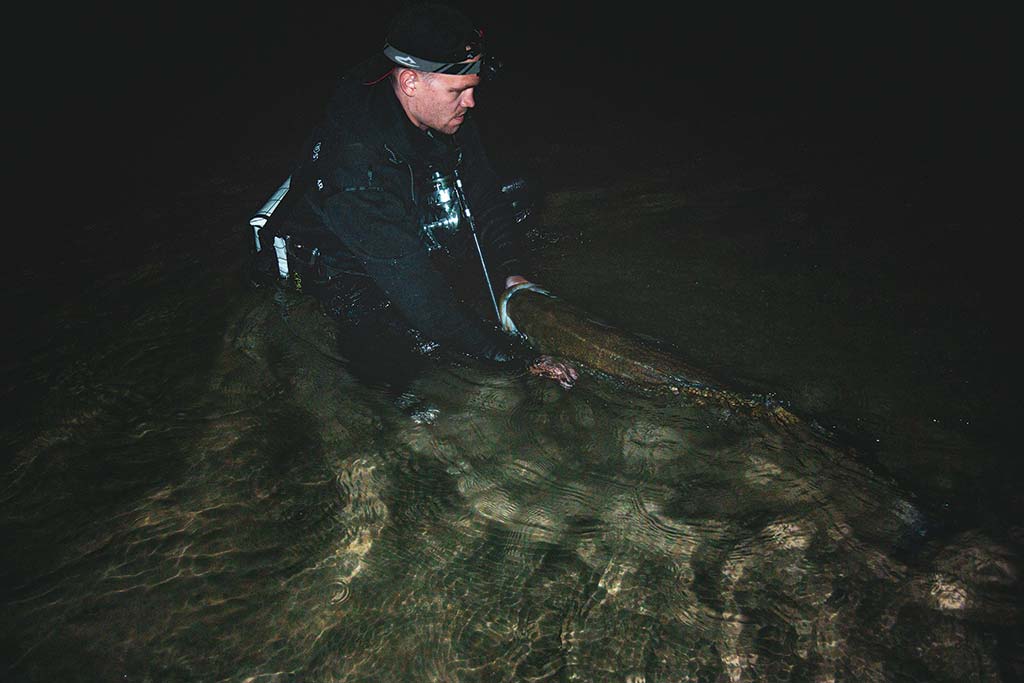
Taking proper time to revive your fish is critical to their survival.
The striped bass needs everyone’s help in making a recovery from its current over-fished status. As we continue to work together to build the population back to a sustainable level, many more anglers have become committed to the best catch-and-release practices over the last couple of years. Lowering release mortality is high concern for many. You can potentially cut down on those that die from injury after being released with a little extra care on the angler’s end.
There is a lot of interest in the methods of proper release online, yet we see dozens of new videos every day showing improper and careless release. Most of these anglers are well-intentioned and trying to show off their catches respectfully and responsibly, while also spreading their ethics of catch-and-release. However, I see many “cringe-worthy” behaviors and treatment of fish being released that are entirely counter to what the angler is attempting to do. Holding the fish out of the water too long, throwing it back into the water, grabbing it by the gills, and other various bad behaviors are unintentionally captured by anglers who simply do not realize they’re doing anything wrong. And worse, they are perpetuating these actions as other anglers see their buddies performing some of these damaging release behaviors.
One of the most common mistakes I see anglers making while releasing stripers is holding the fish only partially in the water. After quickly unhooking, and perhaps taking a photo, the angler then attempts to “revive” the fish by pulling it back and forth through the water. The excited angler is examining their catch, and often a bit distracted in their enthusiasm. The problem I often see is that they have at least most, if not all, of the mouth of the fish out of the water. While this is totally unintentional, it ensures that water is not flowing over the gills, and oxygen is not being delivered to the fish’s bloodstream. The movement of water over the gills is critical, and without the mouth open, virtually no oxygen is getting to the fish. Case in point: I once found a nice, mid-20-pound striper washed up on a beach that looked absolutely pristine. It was a clean, perfect specimen with no injuries. There was only one problem — it had a pencil popper rear hook through its lips, clamping its mouth shut. It didn’t look emaciated, in fact, it looked really chunky, and so it clearly had not starved. While I can’t definitively prove that it was the lack of water movement over the gills that did the fish in, it certainly supports what I’m arguing here.
I encourage you to try my simple methods to prevent this error during release. First, if you’re holding the fish’s lower jaw, put your hand completely under the water beyond your wrist bone. I have found that this is virtually always enough to have the entire fish’s jaw underwater. If my watch is wet, or the eye of the fish is under the surface, I know I’m doing it right. However, an even better way to ensure the head is in the water is to simply hold the fish around the tail. The fish will naturally be under the water when held like this, whether you’re in the surf or in a boat. Indeed, if in a boat, the fish may actually be head down well under the surface. There is a double benefit of holding it like this as well — a strong and properly revived fish will naturally slip your grasp when it’s ready to go. Don’t worry so much about moving it back and forth dramatically. Just a little bit of movement is enough to get saltwater pumping across the gills. The important thing is to simply ensure the head is totally under the water. Also if you do decide to cradle the belly and hold the lower lip a telltale sign that the fish is ready to go it the fish will start to slightly clamp down on your thumb. Once you feel that, your catch is ready to go on its way with its best chance of survival.




